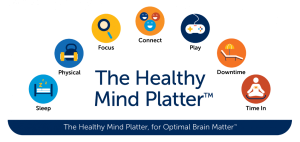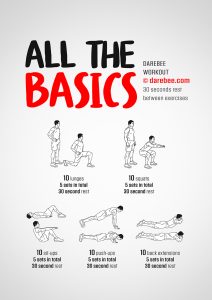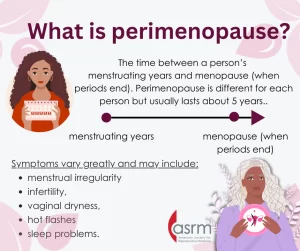The birth of a new year is a popular time for reflection, when we think about aspects of our lives that need improvement. For many, that means making resolutions for a healthier body. This year, why not also resolve to create a healthier mind?
More than a decade ago, the NeuroLeadership Institute developed the Healthy Mind Platter — a list of seven essential activities for optimal brain performance. Inspired by the U.S. Department of Agriculture’s revamped version of the food pyramid, the Healthy Mind Platter lists the “mental nutrients” the brain requires on a daily basis to perform at its best.
With mental exhaustion, stress, and burnout reaching near-epidemic proportions, brain health has never been more important. So every day, try to give your mind a serving of as many of these essentials as possible.
Sleep time
As crucial as high-quality sleep is for the body, it’s perhaps even more important for the mind. As anyone who’s suffered from a poor night’s rest can tell you, sleep affects both cognitive function and emotional regulation — and a lack of it makes you fuzzy-headed and prone to snapping at co-workers.
While we sleep, our brains perform various functions, such as creative processing and data integration. Deep sleep, also known as slow-wave sleep, is important for memory and learning. Slow-wave sleep appears to push memories from temporary storage areas to the brain’s permanent storage area in the neocortex, a process called memory consolidation.
Individual sleep needs vary, but most adults require seven to nine hours nightly. If you don’t get enough nighttime sleep, consider taking a nap. Research indicates that as little as 10 minutes of daytime sleep can improve alertness and cognitive performance.
Play time
As children, we live to play. But somewhere along the path to adulthood, we begin to see play as frivolous, and it falls to the bottom of our priority list. However, play has cognitive benefits that go well beyond childhood.
Psychologists define play as self-directed, intrinsically motivated activity with no purpose beyond the activity itself. Play stimulates reward centers of the brain, causing the release of dopamine, which has been linked to motivation, learning, and creativity.
In the workplace, playfulness can increase job satisfaction, creativity, and innovation. So whether it’s taking a break to enjoy a game of Wordle or engaging in playful banter with a co-worker, make time for play every day.
Downtime
Many of us consider downtime as any time we’re not working. But actually, downtime is unstructured time with no goal in mind and no targeted focus. Activities widely considered downtime, such as watching TV or scrolling through social media, actually aren’t because they require focused attention.
So what exactly is downtime? It’s giving our minds permission to wander. Downtime could involve absentmindedly stroking a pet, meandering down a garden path, or daydreaming during mundane tasks such as folding laundry or taking a shower.
Disconnecting from goal-directed, conscious thought allows our unconscious mind to integrate many disparate pieces of information — often resulting in insights. Research suggests the most effective approach for handling complex decisions is to alternate between periods of conscious and unconscious thought. While the conscious mind collects the necessary pieces of a puzzle, the unconscious mind — which is free to wander during downtime — connects them in new and perhaps unanticipated ways.
Time in
Time in refers to relaxing, quiet reflection that focuses on sensations, images, and feelings — also known as mindfulness.
Mindfulness involves experiencing direct sensory information in real time. For example, if you’re sitting on a pier on a warm summer day, mindfulness will focus your attention on the sensory experiences happening in the moment: the sound of the water gently lapping, a cool breeze blowing through your hair, the feel of an ice-cold beer in your hand.
Experiencing the world in this way allows you to perceive more accurate information about events occurring around you — without the hang-ups of old habits, expectations, and assumptions. Regular practice of time in has a range of other benefits, including increased attention, emotional control, and stress management.
Connecting time
Humans are social animals, and our ability to form high-quality connections is linked directly to our physical and mental health. Social ties and support increase our self-esteem, sense of control, and belonging while also acting as stress buffers. A lack of quality connections actually correlates with a higher likelihood of death.
Since the beginning of the pandemic, forming high-quality connections has become more challenging, especially at work, where Zoom meetings and working from home have restricted in-person interactions. But there are ways to connect in a hybrid workplace: Companies can plan occasional in-person get-togethers, and employees can be more intentional in their efforts to form social ties in a virtual environment by arriving early to Zoom meetings to chat with co-workers or scheduling a virtual coffee with a colleague just to catch up.
Physical time
In addition to improving many other aspects of health, physical activity has a multitude of brain benefits, including enhancing learning and focus and alleviating stress.
While work can get in the way of exercise goals, organizations that give employees autonomy to take exercise breaks during the workday may reap benefits. In one study, companies that provided space and encouragement for employees to exercise during the day reduced the workers’ symptoms of burnout, including anxiety (18%), stress (13%), and sleep impairment (7%). So whether it’s a brisk walk around the block or an intense spin class at the gym, making time for physical activity allows us to regenerate body and mind.
Focus time
The stress, uncertainty, and constant distractions of today’s world make it more difficult than ever to focus. But being able to do so is key for improving productivity and reaching goals. The ability to focus depends on the prefrontal cortex, the part of the brain responsible for most higher cognitive functions, such as organizing actions, decision-making, and long-term planning.
To help maintain focus, tackle difficult tasks that require more concentration when your brain’s at its best, which tends to be first thing in the morning for most people. Try to schedule meetings and mundane tasks, such as reading emails, for later in the day.
New year, new mind
The Healthy Mind Platter provides the necessary daily building blocks for a healthy mind, but there are no hard-and-fast rules about how much time you should spend doing each activity. Requirements will vary with the individual and the day. There’s also no rule that each component must be performed separately. On the contrary, some activities satisfy multiple categories. For example, taking a walk in the park can count as both exercise and down time, so long as you don’t focus on the number of steps you’re taking or how fast you’re walking. Playing the latest Xbox game with your teenager can also allow you to connect, if you take the time to discuss whatever topics come up during the game. And you can have time in while doing almost any activity — for example, practicing mindfulness while walking or eating.
So during the new year, get creative in how you nourish your healthy mind.

The Healthy Mind Platter has seven essential mental activities necessary for optimum mental health in daily life. These seven daily activities make up the full set of ‘mental nutrients’ that your brain needs to function at its best. By engaging every day in each of these servings, you enable your brain to coordinate and balance its activities, which strengthens your brain’s internal connections and your connections with other people.
Focus Time
When we closely focus on tasks in a goal-oriented way, taking on challenges that make deep connections in the brain.
Play Time
When we allow ourselves to be spontaneous or creative, playfully enjoying novel experiences, which helps make new connections in the brain.
Connecting Time
When we connect with other people, ideally in person, or take time to appreciate our connection to the natural world around us, richly activating the brain’s relational circuitry.
Physical Time
When we move our bodies, aerobically if possible, which strengthens the brain in many ways.
Time In
When we quietly reflect internally, focusing on sensations, images, feelings and thoughts, helping to better integrate the brain.
Downtime
When we are non-focused, without any specific goal, and let our mind wander or simply relax, which helps our brain recharge.
Sleep Time
When we give the brain the rest it needs to consolidate learning and recover from the experiences of the day.
Adapt to Promote a Healthy Brain
There’s no specific recipe for a healthy mind, as each individual is different, and our needs change over time too. The point is to become aware of the full spectrum of essential mental activities, and just like with essential nutrients, make sure that at least every day we are nudging the right ingredients into our mental diet, even for just a little time. Just like you wouldn’t eat only pizza every day for days on end, we shouldn’t just live on focus time and little sleep. Mental wellness is all about giving your brain lots of opportunities to develop in different ways.
A fun use of this idea is to map out an average day and see what percentage of your time you spend in each area. Like a balanced diet, there are many combinations that can work well.
In short, it is important to eat well, and we applaud the new healthy eating plate. However as a society we are sorely lacking in good information about what it takes to have a healthy mind. We hope that the healthy mind platter creates an appetite for increasing awareness of what we put into our minds to.
Source: NeuorLeadership Institute







